
views
- Add catalytic converter cleaner to your gas tank when it’s ¼-full. Drive for 15 minutes before filling your tank to clear minor clogs.
- To remove larger clogs, remove your catalytic converter and spray it out with a pressure washer on the lowest setting.
- Soak your catalytic converter in soapy water overnight to break apart stubborn clogs. Rinse the catalytic converter and let it dry before reattaching it.
Unclogging without Removing

Drive until your gas tank is ¼-full. Cleaners work more effectively when you have less fuel in your tank, so drive for a little while if you recently filled up. Once your tank has about 4 gallons (15 L) or drops to ¼-full on the gas gauge, then you’re ready to unclog your catalytic converter. Alternatively, drain your gas tank with siphon until it’s only ¼-full.
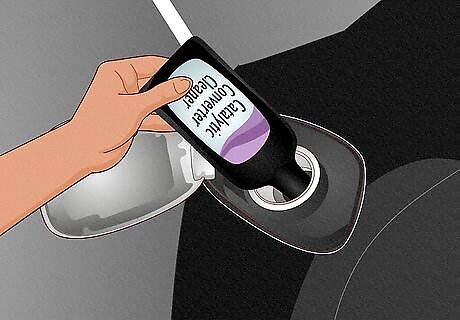
Pour catalytic converter cleaner into your gas tank. Get a bottle of catalytic converter cleaner made for the type of fuel your vehicle uses. Check the instructions on the cleaner to find out how much to add to your tank. Unscrew the gas cap on your vehicle, and stick the bottle inside to pour in the cleaner. Once you add the proper amount, take the bottle out and screw your gas cap back on. Catalytic converter cleaner usually costs between $15–20 USD. Put a funnel in the gas tank nozzle and pour the cleaner through it to prevent spills. While they’re generally safe, many vehicle manufacturers don’t recommend using catalytic converter cleaners since they could potentially damage the internal components.

Drive your vehicle for about 15 minutes. Start your vehicle and drive it around on either city streets or highways. Spend at least 15 minutes driving so your catalytic converter warms up enough for the cleaner to pass through it. As you drive, the cleaner will move through your engine and into your catalytic converter to break apart clogs.
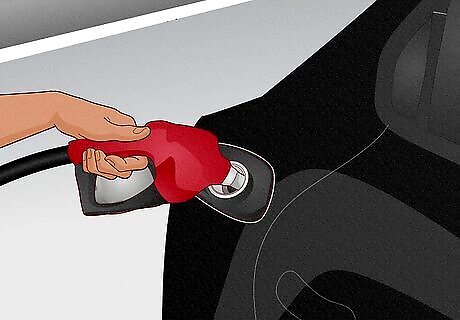
Fill up your gas tank as you normally would. Once your tank is near empty, visit the gas station and fill up with the fuel grade recommended in your vehicle’s manual. Now that the cleaner worked through your catalytic converter, your vehicle should run properly again. Use a cleaner every 5,000 miles (8,000 km) to maintain the converter. If your vehicle still has issues or the Check Engine light is on after using cleaner, try removing the converter to get rid of the clog.
Taking the Converter off for Cleaning
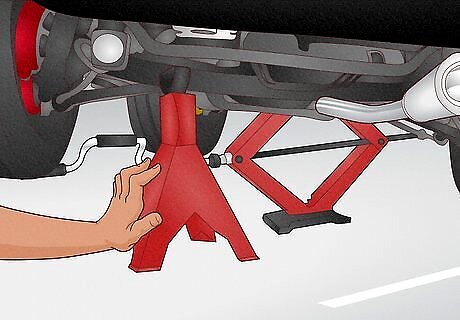
Jack up your vehicle on jack stands. Wait for about 30 minutes after you drive for your vehicle to cool down. Then, find the flat jack point along the car’s frame in front of or behind the tires. Place a jack against the frame and raise your vehicle. Position jack stands under the frame and lower your vehicle back down. Then, repeat the process on the other side of your vehicle. Avoid getting underneath your vehicle while it’s on the jack since it could slip off and cause serious injuries. Removing and cleaning your catalytic converter may be difficult if you don’t have experience with automotive repairs. If you don’t feel confident doing it on your own, take your vehicle to a mechanic instead.

Remove the oxygen sensor from your exhaust line. Get under your vehicle and look along the main exhaust line for an oxygen sensor, which looks like a black cylindrical spark plug connected to wires. Spray penetrating oil on the bolt holding the oxygen sensor in place and use a socket wrench to remove it from your exhaust line. If the oxygen sensor looks dirty when you disconnect it, clean it off by soaking it in gasoline.
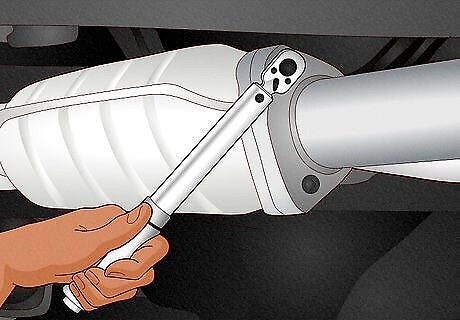
Loosen the bolts to remove your catalytic converter. Your catalytic converter looks like a rectangular box near the middle of your exhaust system. Spray the bolts on either end of the catalytic converter with penetrating oil and then use a socket wrench to turn the bolts counterclockwise until they’re loose. Carefully set your catalytic converter down once you remove it so it doesn’t get damaged. If your catalytic converter is welded to your exhaust pipe, then cut it off of your exhaust line with a reciprocating saw. Tap on your catalytic converter with a rubber mallet and listen for a rustling sound. If you hear anything moving around inside, then it’s a sign your catalytic converter is damaged and should be replaced instead. Full replacements can cost anywhere from $300–3,500 USD depending on the parts. Once you remove your catalytic converter, avoid driving your vehicle since it will let toxic chemicals into the air and may be illegal in your area.
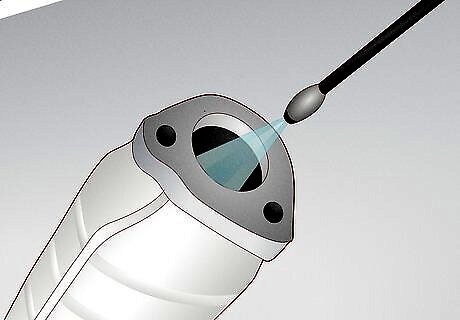
Spray inside the converter with a pressure washer on low. Rent a pressure washer from your local hardware store and set it to the lowest possible setting. Point the pressure washer into the catalytic converter and flush out all the debris and buildup that’s inside. Spray the washer into both ends of the catalytic converter until you don’t see any more residue come out. Avoid using high pressure since you could break the components inside the catalytic converter. If you don’t have access to a pressure washer, use a garden hose with a nozzle attachment. It may not break up as much of the clog as a power washer, but it will still help loosen it up.
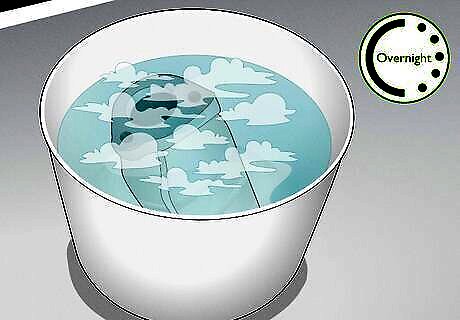
Soak your catalytic converter overnight in soapy water. Find a bucket or container large enough so your catalytic converter can stand vertically. As you fill the container with hot water, add about ⁄2 cup (120 ml) of dish soap and let it suds up. Set the catalytic converter in the soapy water and leave it overnight so the soap has time to remove all the oil and grease buildup inside. Add a splash of ammonia to the soapy water for a little extra cleaning power.
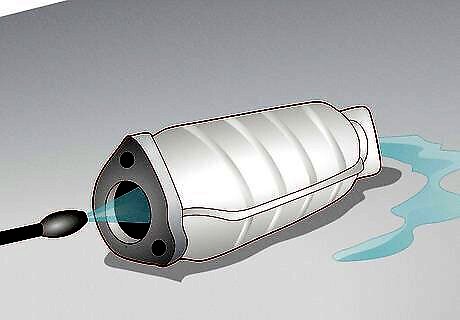
Rinse your catalytic converter and let it dry completely. Use a pressure washer or hose to spray clean water through your catalytic converter. Keep running water through the converter until it comes out clean on the other side to ensure you’ve broken up all the clogs and buildup inside. Then, set your catalytic converter vertically on a towel and let it air-dry for a few hours. Attaching your catalytic converter while it’s still wet could cause it to get damaged.

Reattach your catalytic converter and oxygen sensor to your vehicle. Line your catalytic converter back up with your exhaust line and reattach the bolts by screwing the clockwise. Push the oxygen sensor back into the port next to your converter and tighten the nut with a socket wrench. After reinstalling them, start your vehicle to check if it runs smoother or has any lit warning lights. If your catalytic converter was welded in, weld it back into place after you clean it. If your vehicle isn’t running properly, then have a professional check your catalytic converter.
Symptoms
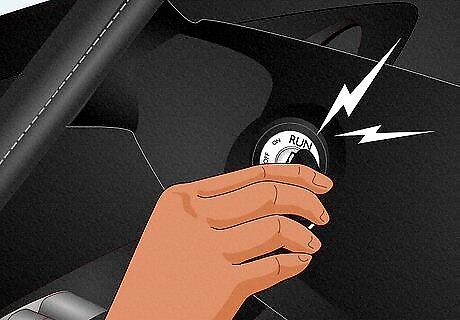
Difficulty starting your engine Since a clogged converter doesn’t let emissions pass through, they can build up and impact your ignition system. When it takes longer than normal for your engine to turn over, then your catalytic converter may be to blame. If your engine doesn’t start at all, then your catalytic converter may be completely clogged and need replacement, which could cost up to $3,500 USD.
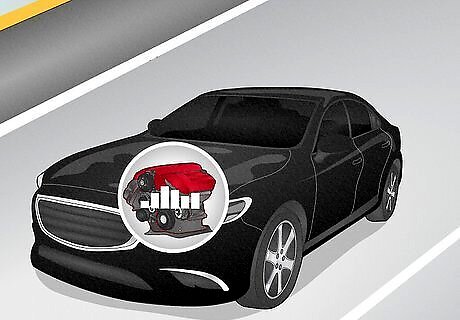
Reduced engine power Since emissions can’t pass through your vehicle as well, they create back pressure on your engine so it doesn’t run as efficiently. Since your engine isn’t pulling enough fuel, you may notice it’s more difficult to accelerate when you press the gas pedal.
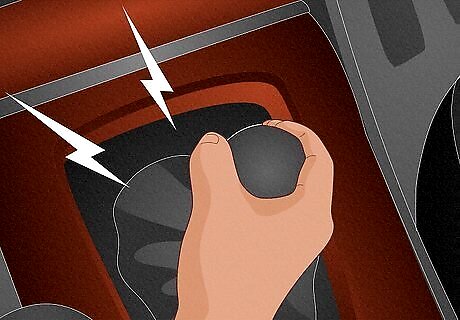
Stalling and sputtering When a blockage gets into your catalytic converter, it doesn’t allow air to enter your engine. When you’re driving, listen for sputtering as you accelerate or feel for hesitation when you’re shifting gears so you know when your catalytic converter is bad.
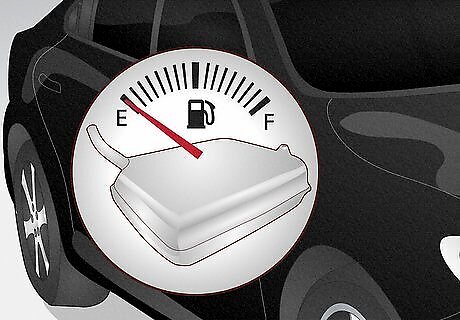
Lower fuel efficiency When your catalytic converter gets clogged, it measures the air/fuel mixture inaccurately and may make your engine pull more gas from your tank. If you notice that your tank runs out faster than normal but your driving habits haven’t changed, check your catalytic converter first.

Rotten egg smell Normally, exhaust passes through your catalytic converter to remove harmful chemicals, but clogs may cause unfiltered fumes to build up. If you notice a sulfur-like smell similar to rotten eggs, it’s a sign your catalytic converter isn’t working properly.
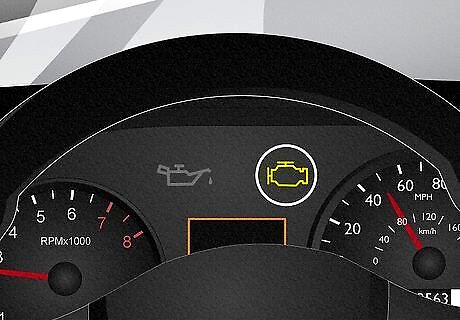
Lit Check Engine light When your catalytic converter gets clogged, it doesn’t run as efficiently and may affect your engine’s performance. Your vehicle’s onboard computer will recognize there’s an issue and trigger a warning light on your dashboard as soon as there’s an issue. Since there are many reasons why the light could turn on, use an OBD code reader to find the issue and confirm the problem is your catalytic converter. If your Check Engine light is flashing, then avoid driving your vehicle since you could damage your engine.

Failed emissions test Since a clog prevents emissions from filtering through your catalytic converter, a smog test will detect harmful fumes and trigger an automatic failure. If you’ve done everything else to pass your emissions test but still fail, a clogged catalytic converter is most likely to blame.
Diagnosing a Clog
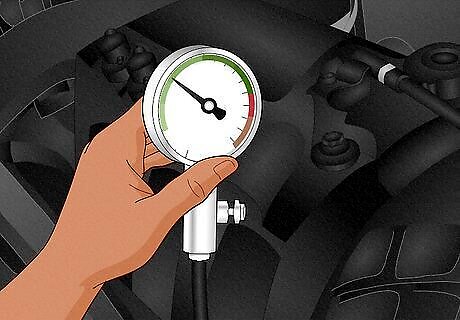
Test the intake vacuum to see if it loses power when you accelerate. Look for a vacuum intake port near the top of your engine past the throttle, and take the hose off. Connect a vacuum test gauge to the port and start your engine to get a baseline reading. Have a friend rev your engine up to 2,000 RPMs and check the measurement again. If the gauge measurement drops significantly and continues to go down, then your catalytic converter is clogged. It’s normal for the gauge reading to dip slightly when you first rev your engine, but it will return to the baseline reading if your catalytic converter is getting enough airflow. If you’re not sure if the port is a vacuum intake, start your engine and hold your finger over the port. If it lightly sucks your finger closer, then it’s the right port.
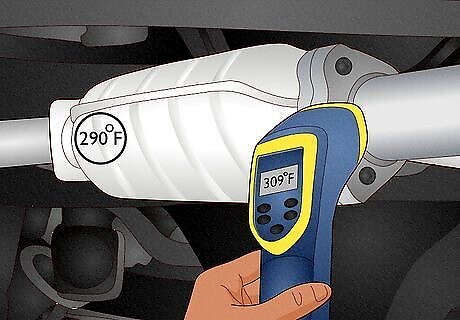
Look for temperature differences in front of and behind your converter. Jack your vehicle up so you’re able to access the catalytic converter. Start your vehicle and let it warm up for about 10–15 minutes. Use a laser thermometer to check the temperature of the intake pipe at the front of the catalytic converter. Then, check the temperature of the outlet pipe. If the readings are the same or within a few degrees, then the catalytic converter isn’t working properly. When your catalytic converter works properly, the temperature of the intake pipe should be significantly hotter than the outlet pipe.
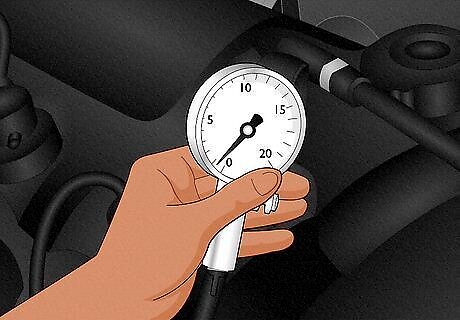
Check the converter’s back pressure through the oxygen sensor ports. Unscrew the oxygen sensor that’s closest to your engine and attach a back pressure test gauge to the port. Start your engine and check that the gauge is below 1 PSI of pressure. If the pressure looks good, have a helper rev the engine to 2,500 RPM and check that the pressure stays under 2.5 PSI. If the pressure is ever higher than it should be, it means a clog is restricting airflow in your catalytic converter.
Causes
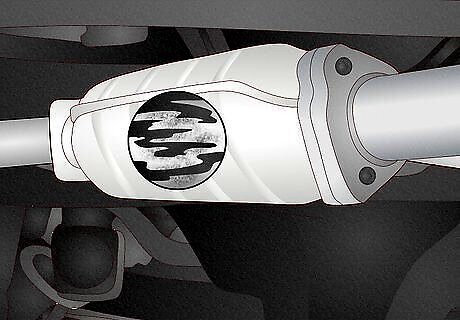
Unburnt fuel in your exhaust If additional fuel pulls into your engine and doesn’t burn off, it moves through your exhaust system and into your catalytic converter. The fuel can eventually build up and turn to grime clogging up your converter. Extra fuel may get into your engine due to faulty oxygen sensors, a bad spark plug, or old fuel injectors.

Leaking oil or coolant If oil or coolant leaks into your engine, it moves through to your exhaust system and gets caught in the honeycomb structure inside the catalytic converter. As more contaminants build up, the clog restricts airflow moving through your catalytic converter.

Broken converter components If something struck your catalytic converter with enough force, the components inside may have shattered so they’re not filtering properly. Listen for a rattling sound when you run your vehicle or if you tap on your catalytic converter to determine if the parts inside are damaged. If your catalytic converter has broken internal components, then replace it instead of cleaning it.




















Comments
0 comment